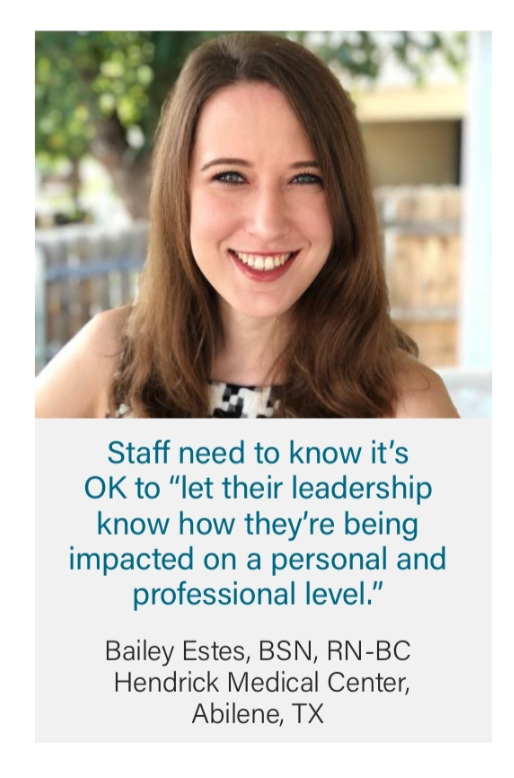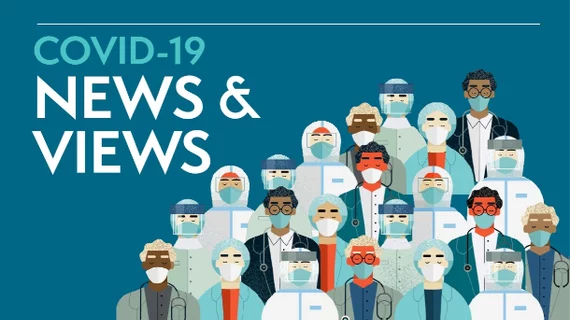PANDEMIC PRESSURES & PRIORITIES Survey Suggests Do’s & Don’ts for Cardiology
As the coronavirus resurges and mutates, healthcare leaders are striving not just to contain infection but also to avoid a repeat of the financial devastation many hospitals suffered in 2020 when their facilities closed to nonemergent care. Insights that might help these leaders could come from unlikely sources, suggest the authors of a survey of U.S. cardiac cath lab (CCL) nurses and technologists published in the Journal of Invasive Cardiology (online Dec. 6, 2020).
Last spring, 450 CCL staff responded to the 45-question online survey fielded by Bailey Estes, BSN, RN-BC, a cath lab nurse and research coordinator at Hendrick Medical Center in Abilene, TX, and colleagues. The results revealed the strain these staff were experiencing: 95 percent said their morale was down; 80 percent felt increased anxiety and stress; more than a third reported feeling fearful, depressed or angry. Some of those feelings could be tied to the financial hardships that came with having their work-hours cut or from being furloughed or laid off. Other stresses came from being reassigned, in some cases to COVID-19 care units, where 79 percent felt unprepared for their new tasks and 41 percent believed their PPE was inadequate.
On their own, these findings offer clues about the personnel issues that hospital and practice staff should consider, says study coauthor Srihari S. Naidu, MD, director of the CCL at Westchester Medical Center in Valhalla, NY. As important, he says, are the lessons to be learned about how to go forward— or not—if strategy sessions start pointing toward shutdown.
How should hospitals proceed if the virus resurges in their area? That was the focus of CVB’s mid-December conversation with Estes, Naidu and Binita Shah, MD, MS, who is associate director of research for NYU Langone Health’s cardiac cath lab and was not involved in the survey. Here are some key takeaways:
CARRY ON WITH CARDIOVASCULAR CARE
Cardiology can’t just shut down, Naidu insists. For one thing, hospital systems can’t “tolerate such a decline in reimbursement and revenue …. We’re going to need to find a compromise on how to continue to have revenue throughout COVID, which may be a long-term process.” That will mean maintaining elective care delivery “in a clean, COVID-tested manner, where patients come in to the hospital very quickly and leave within 24 hours and we expedite processes to ensure that.”
The other reason that cardiovascular care can’t simply pause even in the midst of pandemic is that doing so sends a dangerous message to patients—that it’s OK to put off cardiac care. In 2020, fear of coming to the hospital led to patients choosing to not seek care even when they had acute MI, unstable angina or cardiac arrest.
What’s more, COVID-19 is evolving into a thrombotic disease marked by large MI, venous complications, and PE thrombosis in transit to the lungs, Shah says. “These are all things that require a very wellrested cath lab to take on.”
That is another important reason to protect the well-being of nurses and technologists, Naidu stresses. “COVID may go on for years. All of these things together show us that [we can’t repeat the shut-down approach]—not just because of staff wellness and financial stability, but for healthcare system stability and to optimally treat patients.”
 PRIORITIZE COMMUNICATION & TRANSPARENCY
PRIORITIZE COMMUNICATION & TRANSPARENCY
For Estes, one “big point” from the survey results was the impact of “inadequate communication between leadership and administration to the nurses and the technologists.” Having lived through the first wave, practices are better prepared for what might come next, she says, but strong leadership will be needed. She wants to see leaders consistently checking in with staff at all levels, listening carefully and being transparent about what’s known and unknown.
Being willing to say “I don’t know” was key to getting through the early part of the pandemic in New York City, adds Shah. “We needed to address [the team’s] questions preemptively. A lot of the answers were, ‘I don’t know,’ but the team appreciated all of us getting together, even virtually or distanced, and going through everyone’s questions. … As the team leader, I had to be very comfortable saying at times, ‘I do not know the answer to that, but as soon as we know, we will get back to you.’”
PROMOTE MENTAL HEALTH RESOURCES
Practice leaders must create environments that encourage team members to lean on one another, ask for help, and take advantage of the mental health resources provided by their hospitals and professional societies, Estes says. Most cath lab teams are friendly and try to look out for one another, she adds, but staff need to know it’s OK to “let their leadership know how they’re being impacted on a personal and professional level.”
Shah, too, wants to see hospital leaders encouraging staff to reach out for help. After having her team at the pandemic’s U.S. epicenter last year, she says, “the majority of the staff were going to have some degree of PTSD from it. [We need] to put a name to that and normalize that it is OK to reach out for help and talk about this.”
It’s important for the well-being of the team and for patients, Shah emphasizes. “I feel wholeheartedly that when a patient leaves or enters the cath lab happy, it has a lot to do with the aura around the cath lab, meaning how the nurses feel, how the techs feel. … If they’re feeling confident, if they’re feeling anxious, if they’re feeling scared, all of that will translate over to how patients will feel as well.”

